Marry the Girl

Brief Synopsis
Cast & Crew
William Mcgann
Mary Boland
Frank Mchugh
Hugh Herbert
Carol Hughes
Allen Jenkins
Film Details
Technical Specs

Synopsis
Miss Ollie Radway, one of the owners of Radway Features Syndicate, orders Drake, the managing editor of the newspaper, to keep her niece Virginia away from the paper. When he objects, she fires him, saying she believes the job is so easy that she will give it to the first man who walks through the door. This man turns out to be David Partridge, an ineffectual employee. As soon as Drake leaves, chaos hits the newspaper. After Dr. Stryker, who writes a psychiatric column, quits his job, Ollie invites him to dinner, hoping to convince him to stay. Unfortunately for her plans, Virginia has invited Dimitri Kyeff, an artist also working at the newspaper, as her guest. Stryker and Dimitri quarrel and both storm off. Ollie sends Partridge after them. As he leaves, Virginia tells Partridge of her plans to elope with Dimitri and asks for his help. Despite his own love for Virginia, Partridge agrees, but Ollie discovers the plan and stops the elopement. To remove Virginia from temptation, Ollie pretends that her brother John must go to Stryker's sanitarium and suggests that Virginia drive him. Dimitri, who has no money, moves in with Partridge. Then Forrester, the cartoonist, shows up at Partridge's apartment, totally drunk. Partridge decides to take him to Dr. Stryker's to sober up, not knowing that Virginia is on her way there. At the sanitarium, Dimitri learns that Virginia has no money of her own and immediately transfers his affections to Ollie. Because he loves her, Partridge helps Virginia escape from the sanitarium. While stopped at a cafe, they are kidnapped by gangsters, but Partridge's signals are seen by a Boy Scout, who brings the police. Then Partridge and Forrester, who was hidden in the car, find a stash of guns in a closet and shoot their way out of the room. When they return to the sanitarium, they learn that Ollie and Dimitri have married, leading Partridge to announce his engagement to Virginia.

Director
William Mcgann
Cast

Mary Boland
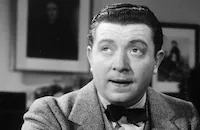
Frank Mchugh

Hugh Herbert
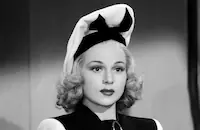
Carol Hughes

Allen Jenkins

Misha Auer
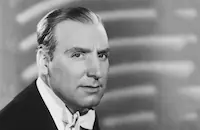
Alan Mowbray

Hugh O'connell
Teddy Hart

Tom Kennedy
Dewey Robinson
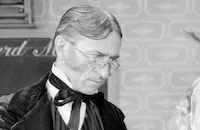
Olin Howland
Arthur Aylesworth
Louis Mason

William Davidson

Charles Judels
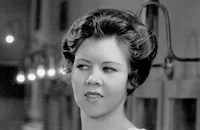
Mary Treen

Ward Bond

Irving Bacon
Louise Stanley

Bess Flowers
Crew
Harry Joe Brown
Hugh Cummings
Pat C. Flick
Frank Heath
Sig Herzig
Brown Holmes
Mervyn Leroy
Warren Low
Max Parker
Tom Reed
Howard Shoup
Arthur Todd
Jack L. Warner

Film Details
Technical Specs

Articles
Marry the Girl
Tagline for Marry the Girl With the popularity of screwball comedies in 1930s Hollywood, a small group of actresses cornered the market on one of the genre's most popular types, the dizzy society matron. Depending on age, attractiveness and level of pixilation, those roles could go to Spring Byington, Alice Brady, Dame May Whitty or Billie Burke. For this 1937 film, a combination of the screwball and newspaper genres, Warner Bros. turned to one of the funniest and most distinctive of the group, Mary Boland.
Best known for her role as the Countess De Lave in The Women (1939) and Mrs. Bennet in Pride and Prejudice (1940), Boland managed to be both infantile and imperious at the same time. In Marry the Girl, she stars as a daffy dowager who, with equally eccentric brother Hugh Herbert, runs a thriving newspaper. After firing the managing editor for failing to keep her niece (Carol Hughes) out of the newspaper business, she hands the job to Frank McHugh, a minor employee with a crush on the girl. In short order, McHugh is assigned to keep Hughes away from fortune-hunting editorial artist Mischa Auer, a welcome assignment as it throws him together with the object of his affections.
Marry the Girl was clearly a B movie for Warner, assigned to Bryan Foy, the producer dubbed "Keeper of the B's" for his 14-year stint as head of the studio's B unit, and director William C. McGann, who thrived making Warner's low-budget films throughout the decade. Joan Blondell was originally cast as Boland and Herbert's niece, but when she was needed for retakes on a more prestigious film, The King and the Chorus Girl (1937), the role was handed to Carol Hughes, best know today as Dale Arden in Flash Gordon Conquers the Universe (1940).
There was nothing slipshod about Warner's B movies. They may have been made quickly, but so were most of the studio's films. And that speed at least meant they moved quickly, with Marry the Girl navigating numerous plot twists in a mere 68 minutes. And no film could look shoddy when filled with members of the Warner Bros. stock company, a group of actors and actresses who brought fast-talking grit to all the studio's work. The lead in Marry the Girl went to McHugh, usually a sidekick to bigger stars like James Cagney or Pat O'Brien in the studio's A pictures. Joining him were such studio stalwarts as Herbert, Allen Jenkins and Alan Mowbray. And the role of the fortune-hunting artist out to get his hands on the family fortune went to Mischa Auer, who had just won an Oscar® nomination for playing the eccentric playboy in My Man Godfrey (1936).
At the center of all the fun was Boland. Whether shouting nonsensical orders in the newsroom or flirting with Auer to keep him away from her niece, she keeps the screwball antics afloat almost effortlessly. That easy knack for light comedy was the product of four decades of hard work in the theatre, where she had started out at the age of 15, following in father William Boland's footsteps. Early on, she formed a popular romantic team with John Drew, uncle of John, Lionel and Ethel Barrymore. Her greatest stage successes came in the 1920s, when she honed her image as a scatterbrained high-society woman to perfection. Her popularity helped boost the career of the young Humphrey Bogart, who co-starred with her in two hits, 1923's Meet the Wife and 1925's Cradle Snatchers. Boland had tried silent films in the 1910s, but gave it up after only nine films. She returned to the screen in 1931 with a Paramount contract that allowed her to return to the stage periodically (she starred in Cole Porter's musical hit Jubilee in 1935). There she did a popular series of comedies teamed with Charles Ruggles. They were first matched up in supporting roles in Evenings for Sale (1932) and then co-starred in one of the vignettes in If I Had a Million (1932). When they scored a surprise hit starring in the B movie Mama Loves Papa (1933), it led to ten more films together, the most notable being the Charles Laughton hit Ruggles of Red Gap (1935).
By Frank Miller

Marry the Girl
Quotes
Trivia
Notes
According to a news item in Hollywood Reporter, Carol Hughes replaced Joan Blondell when the latter was needed for retakes of The King and the Chorus Girl.















